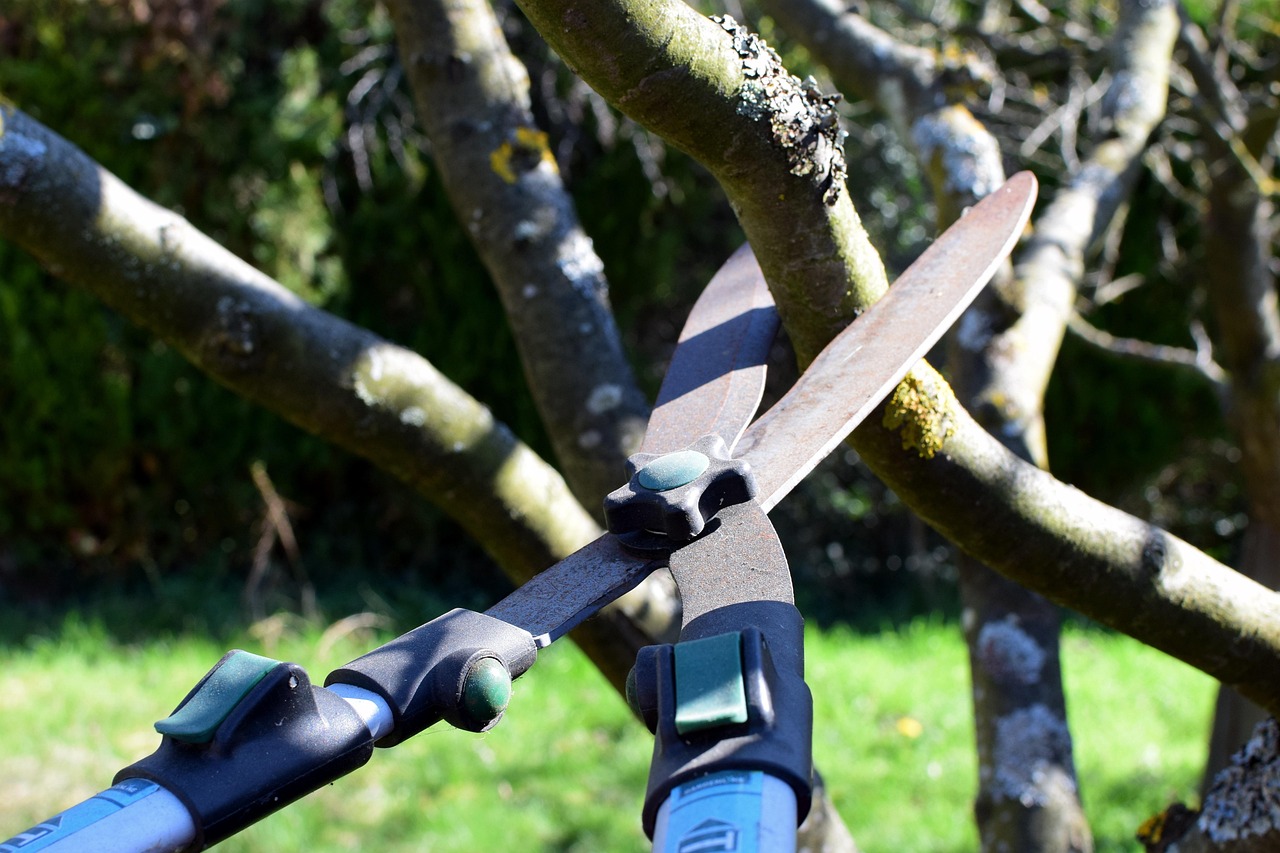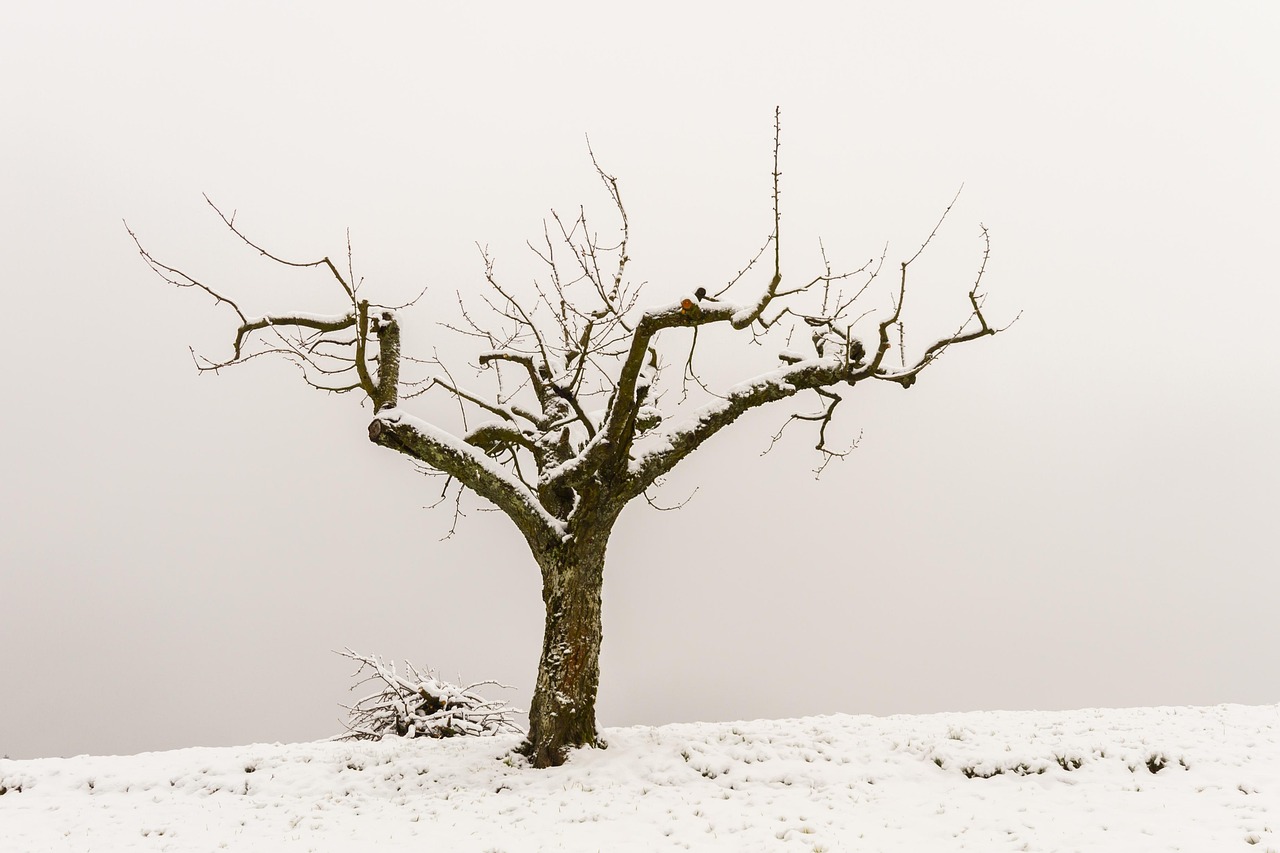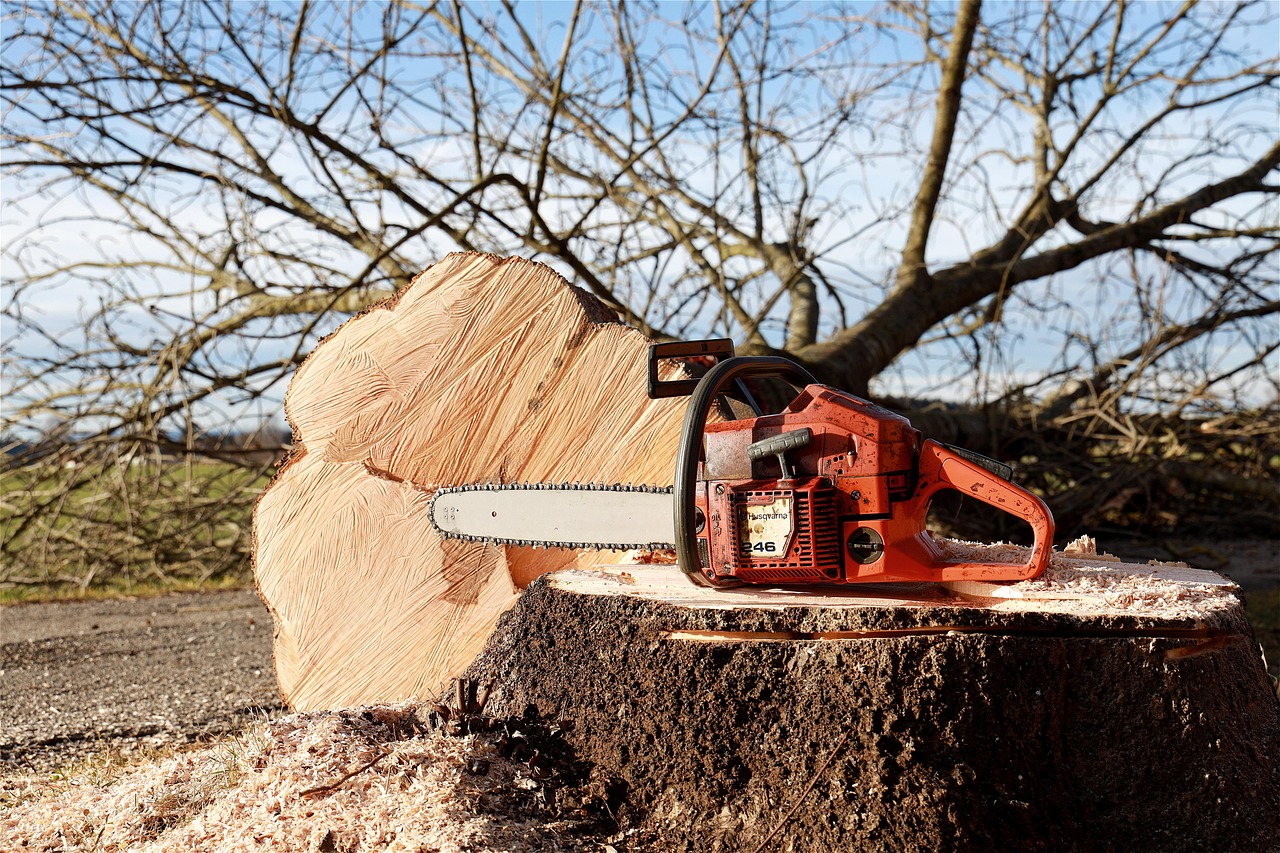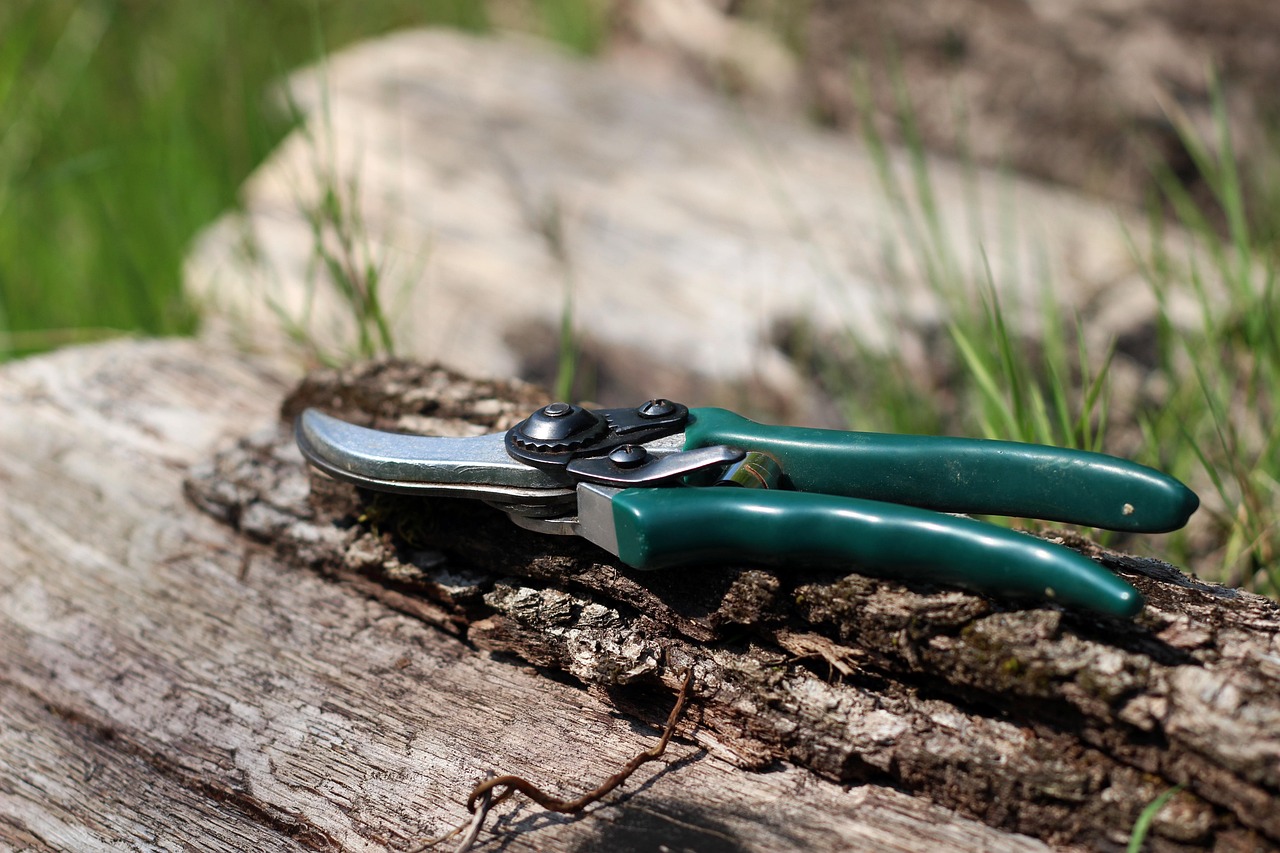Tree pruning is essential for maintaining the health and aesthetics of suburban homes. Regular pruning encourages growth, removes dead or diseased branches, and improves the overall appearance of trees in your yard.
In suburban areas, trees provide shade, enhance curb appeal, and contribute to the overall landscape. However, without proper care, they can become overgrown or unhealthy. Pruning is a crucial part of tree maintenance that helps ensure your trees remain vibrant and safe. It is important to understand when and how to prune trees effectively.

Tree pruning involves selectively removing certain parts of a tree, such as branches or roots, to enhance its structure and growth. This process can be beneficial for various reasons:
- Improving tree health by removing dead or diseased limbs.
- Encouraging new growth and flowering.
- Enhancing the shape and appearance of the tree.
- Increasing sunlight penetration and air circulation.
- Reducing the risk of falling branches during storms.
Understanding Tree Types and Their Pruning Needs
Different tree species have unique requirements when it comes to pruning. Understanding these differences is essential for effective care. Here are some common tree types found in suburban homes and their specific pruning needs:
| Tree Type | Best Time to Prune | Pruning Focus |
|---|---|---|
| Deciduous Trees | Late winter to early spring | Removing dead branches and shaping |
| Evergreen Trees | Late spring to early summer | Thinning out dense areas |
| Fruit Trees | Winter or early spring | Shaping for better fruit production |
| Flowering Trees | After flowering season | Shaping and removing spent flowers |
By knowing the best time to prune each type of tree, you can promote healthy growth and ensure they flourish in your yard. For instance, most deciduous trees are best pruned in late winter or early spring while they are still dormant. This timing helps reduce stress on the tree and encourages vigorous growth in the warmer months.

Essential Tools for Pruning
Having the right tools is vital for effective tree pruning. Using proper equipment not only makes the task easier but also helps maintain the health of the tree. Here are some essential tools you should consider:
- Pruning Shears: Ideal for cutting small branches up to ¾ inch thick.
- Loppers: Great for thicker branches, providing more leverage than shears.
- Saws: Use a handsaw or a pole saw for larger limbs that cannot be cut with shears or loppers.
- Gloves: Protect your hands from sharp branches and thorns.
- Ladder: Necessary for reaching higher branches safely.
Before starting your pruning project, ensure your tools are clean and sharp. This will provide cleaner cuts that help reduce damage and promote quicker healing for the tree.
Basic Pruning Techniques
When it comes to pruning, using the right techniques is essential for achieving the desired results while minimizing harm to the tree. Here are some basic pruning techniques to follow:

- Crown Thinning: This technique involves selectively removing branches to allow more light to penetrate through the canopy. It encourages healthier growth.
- Crown Raising: Removing lower branches can help increase clearance under the tree, making space for pedestrians or vehicles.
- Crown Reduction: This technique reduces the height or spread of a tree while maintaining its natural shape. It is often used for trees that are growing too close to structures.
- Deadwooding: This involves removing dead or dying branches from the tree to improve both safety and aesthetics.
Each technique serves a purpose and can significantly impact the health of your tree. It is crucial to assess the condition of your trees regularly and apply these techniques as needed.
Pruning is more than just trimming branches; it is an art and a science that requires knowledge and skill. As you embark on this journey of maintaining your suburban trees, keep in mind the specific needs of each species, utilize proper tools, and apply effective techniques for the best results.
Timing Your Pruning
Knowing when to prune is as important as knowing how to prune. The timing can significantly affect the health and growth of your trees. Seasonal changes influence not only the appearance but also the physiological processes within trees. Here are some guidelines for pruning based on seasonal considerations:

- Winter Pruning: Many experts recommend pruning during the winter months while trees are dormant. This is when trees are less stressed, and it minimizes the risk of sap loss and disease.
- Spring Pruning: Pruning in early spring can be beneficial for some flowering trees, as it can encourage more blooms. However, it is essential to avoid pruning right before the tree flowers.
- Summer Pruning: This is ideal for removing excess growth. It helps manage size and encourages bushier growth but should be done with caution.
- Fall Pruning: Generally not recommended, as it can expose trees to winter injury and disease.
Understanding these seasonal patterns will help ensure that your pruning efforts yield the best results for your trees’ health and aesthetics. By aligning your pruning schedule with the natural cycles of the trees, you can achieve a more resilient landscape.
Signs That Your Trees Need Pruning
Not all trees require regular pruning at the same intervals. It is crucial to observe your trees and look for specific signs that indicate it is time to prune. Here are some common indicators:
- Dead or Dying Branches: If you notice branches that are brittle, discolored, or have no leaves, they should be removed.
- Overgrown Canopy: When branches start to encroach on buildings or overhead wires, it’s time to trim them back.
- Pests or Diseases: If pests or diseases are visible on certain branches, prompt removal can prevent further spread.
- Crown Density: If the tree looks too dense, thinning out branches will allow more sunlight and air circulation.
Regular inspections of your trees will help you identify these signs early. It is much easier to maintain a tree’s health than to deal with severe issues later on.
Common Mistakes to Avoid While Pruning
Even seasoned gardeners can make mistakes when pruning trees. Avoiding these common pitfalls can help you maintain healthier trees and a more attractive landscape:
- Pruning Too Much: Over-pruning can stress a tree and lead to poor health. Always follow the one-third rule: never remove more than one-third of a tree’s canopy in a single season.
- Improper Cuts: Making flush cuts can damage the tree’s structure and expose it to disease. Always make cuts just outside the branch collar.
- Poor Timing: Pruning at the wrong time of year can lead to sap loss, stress, or even death of the tree. Always consider seasonal factors.
- Neglecting Safety: When working with tall trees or heavy branches, using proper safety equipment and techniques is crucial. Always wear gloves and eye protection.
Avoiding these mistakes will not only keep your trees healthy but also enhance their beauty and longevity in your suburban landscape.
When to Call a Professional Arborist
While many homeowners can handle basic pruning tasks, there are situations where hiring a professional arborist may be necessary. Here are some scenarios where professional help is advisable:
- Large Trees: If you have large trees that require extensive pruning or removal of high branches, a professional’s expertise is essential.
- Diseased Trees: If you suspect that your tree has a disease, a certified arborist can diagnose and treat it effectively.
- Structural Issues: If a tree has structural problems or appears unstable, an arborist can assess its health and provide recommendations.
- Safety Concerns: If your pruning task involves working near power lines or involves heavy lifting, it is safer to call in an expert.
A professional arborist not only has the knowledge but also the tools required to perform pruning tasks safely and effectively, ensuring the well-being of your trees.
Maintaining Your Tools
Keeping your pruning tools in good condition is essential for effective tree care. Here are some maintenance tips to ensure your tools are ready when you need them:
- Cleaning: After each use, clean your tools with soapy water or a disinfectant to prevent disease transmission between plants.
- Sharpening: Regularly sharpen blades to ensure clean cuts, which promote faster healing for wounds on your trees.
- Inspection: Check your tools regularly for signs of wear or damage. Replace any broken parts before starting your next pruning session.
A little effort in maintaining your tools can go a long way in promoting the health of your trees and enhancing your overall pruning experience.
Understanding Tree Growth Patterns
To effectively prune trees, it is essential to understand how they grow. Trees have specific growth patterns influenced by their species, environment, and age. Recognizing these patterns can help you make informed pruning decisions that enhance their health and appearance.
Types of Growth
Trees exhibit two main types of growth: primary and secondary. Understanding the difference between these two types can inform your pruning strategy:
- Primary Growth: This refers to the vertical growth of the tree, occurring at the tips of the branches and roots. Primary growth is essential for the tree’s height and overall reach.
- Secondary Growth: This involves the thickening of stems and branches, contributing to the tree’s girth. Secondary growth is crucial for structural stability and strength.
Both types of growth are vital for a tree’s health. When pruning, consider which type of growth you are affecting and adjust your techniques accordingly to support the tree’s natural development.
Growth Patterns by Tree Species
Different tree species have unique growth patterns and habits. Here are a few examples:
| Tree Species | Growth Habit | Pruning Considerations |
|---|---|---|
| Maple | Fast-growing with dense foliage | Prune in late winter to avoid sap loss. |
| Pine | Evergreen with a central leader | Prune during late spring; avoid excessive cutting. |
| Cherry | Moderate grower with beautiful blossoms | Prune after flowering to maintain shape. |
| Oak | Slow-growing with strong branches | Prune in winter to minimize disease risk. |
Understanding these growth patterns will help you tailor your pruning techniques to suit each type of tree in your landscape. This knowledge allows for more effective care and promotes healthy growth over time.
The Role of Pruning in Tree Health
Pruning plays a significant role in maintaining the health of your trees. It helps manage their growth, enhances their appearance, and prevents potential hazards. Here are some key health benefits of regular pruning:
- Disease Prevention: By removing dead or diseased branches, you can limit the spread of infections and pests that may affect the entire tree.
- Encouraging New Growth: Pruning stimulates the growth of new shoots, leading to a fuller, healthier canopy.
- Improving Airflow: Thinning out dense foliage allows better air circulation, reducing humidity levels that promote fungal diseases.
- Maintaining Structural Integrity: Regular pruning helps maintain a strong structure by removing weak or crossing branches that could cause damage during storms.
A proactive approach to pruning can significantly enhance the health and longevity of your trees, ensuring they thrive in your suburban environment.
Pruning Techniques for Specific Tree Types
Different trees respond better to specific pruning techniques. Here are tailored approaches for some common types of trees:
Deciduous Trees
Deciduous trees lose their leaves in the fall. The best time to prune them is during dormancy in late winter or early spring. Focus on:
- Removing dead or crossing branches.
- Shaping the canopy for better light penetration.
- Encouraging an open center to promote airflow.
Evergreen Trees
Evergreens retain their foliage year-round. Pruning should occur in late spring or early summer. Key techniques include:
- Thinning dense branches to allow sunlight.
- Avoiding excessive cutting, as this can lead to bare spots.
- Mild shaping to maintain natural form.
Fruit Trees
The timing and technique for pruning fruit trees are crucial for fruit production. Prune during the dormant season or after harvest. Focus on:
- Removing water sprouts and suckers that divert energy from fruit production.
- Shaping the tree to maximize sunlight exposure for all branches.
- Encouraging an open center to improve air circulation and reduce disease risk.
The Impact of Local Climate on Pruning
The climate in which you live can greatly affect how and when you should prune your trees. Here are some points to consider based on local climate conditions:
- Mild Climates: Trees may not have a distinct dormancy period, allowing for flexible pruning schedules throughout the year.
- Cold Climates: Dormant pruning is essential to avoid winter injury. Pay attention to frost dates when scheduling your pruning activities.
- Tropical Climates: Pruning may be necessary year-round due to rapid growth rates but should be adjusted based on rainy seasons to avoid disease spread.
Understanding local climate impacts will help you develop a more effective pruning schedule that aligns with your trees’ natural growth patterns and environmental conditions.
Common Tree Diseases and Pests
Understanding the potential threats to your trees can help you take preventive measures during pruning. Various diseases and pests can affect tree health, and being aware of them is crucial for maintaining a thriving landscape.
Diseases
Several common tree diseases may require you to adjust your pruning approach:
- Powdery Mildew: This fungal disease appears as a white powdery coating on leaves. Pruning affected branches can help improve air circulation and reduce humidity around the tree.
- Root Rot: Often caused by overwatering or poor drainage, root rot leads to tree decline. Pruning dead or dying branches can help redirect energy to healthy parts of the tree.
- Canker Diseases: These infections can cause sunken lesions on branches and stems. Removing infected branches promptly is essential to prevent further spread.
Pests
Pests can also pose a significant threat to your trees. Here are some common pests to watch for:
- Spider Mites: These tiny pests thrive in dry conditions and can cause leaf discoloration. Regular inspections and pruning can help control their population.
- Aphids: These small insects feed on tree sap, weakening the tree. Pruning infested branches can help reduce their numbers and prevent damage.
- Emerald Ash Borer: This invasive pest affects ash trees, leading to rapid decline. If you notice signs of infestation, it’s crucial to consult an arborist for appropriate actions.
By regularly monitoring your trees for diseases and pests, you can take early action to protect their health and longevity. Pruning becomes not just a maintenance task but also a critical part of disease management.
Enhancing Curb Appeal through Pruning
Pruning not only fosters tree health but also enhances the overall aesthetic appeal of your property. Well-maintained trees contribute significantly to curb appeal. Here are some tips for using pruning to create a visually pleasing landscape:
- Balanced Canopy: Aim for a balanced shape when pruning. A well-structured canopy enhances the beauty of the tree and creates harmony with surrounding plants.
- Layered Heights: Consider varying the heights of trees and shrubs in your yard. Prune lower branches of larger trees to allow visibility of smaller plants underneath, creating depth in your landscape.
- Seasonal Interest: Different trees offer unique visual interest throughout the seasons. Prune flowering trees after blooming to maintain their shape and encourage future blooms.
A thoughtful pruning strategy will not only keep your trees healthy but also elevate the appearance of your entire property, making it more inviting to visitors and passersby.
Utilizing Mulch and Fertilizer Post-Pruning
After pruning, providing your trees with adequate care can enhance their recovery and growth. Using mulch and fertilizer effectively is important in this regard:
- Mulch: Applying a layer of organic mulch around the base of your trees helps retain moisture, regulate soil temperature, and suppress weeds. Ensure that the mulch does not touch the tree trunk to avoid rot.
- Fertilizer: Consider using a slow-release fertilizer after pruning, especially if your tree shows signs of nutrient deficiency. Fertilizing can provide necessary nutrients that support new growth.
Proper post-pruning care will help your trees bounce back more robustly, ensuring they remain vibrant and healthy for years to come.
Final Thoughts
Pruning trees in suburban homes is a vital practice for maintaining health, safety, and aesthetics. By understanding the specific needs of different tree species, recognizing signs that indicate when pruning is necessary, and employing proper techniques, homeowners can foster a thriving landscape.
The timing of pruning, awareness of local climate conditions, and knowledge about potential diseases and pests will further empower you as a caretaker of your trees. Regular maintenance not only enhances the beauty of your property but also ensures that your trees remain healthy and resilient against various threats.
As you embark on your tree care journey, remember that each tree is unique and requires attentive observation and care. With the right tools, techniques, and knowledge, you can create a beautiful suburban landscape that thrives through every season.
